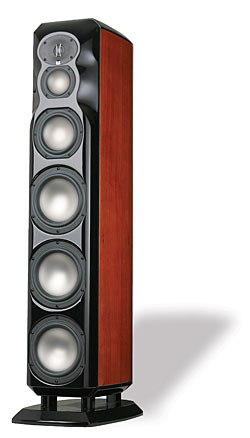| Columns Retired Columns & Blogs |
I love this article and will be using the principles and the CD to set up my speakers but I have a dumb question I need answered before I get started. For the purpose of calculating the Golden ratio, by "woofer" I assume you mean the largest driver in the cabinet. Some companies call the speaker just larger than the tweeter a woofer, especially if it is over 6" in diameter. So am I correct in assuming the "woofer is the largest driver.
Also, I have a floor-standing speaker that has a vertical array of 3 of these largest drivers towards the bottom of the cabinet. WHere do I measure from - the center of the middle one?
Thanks for any help you can give. Since starting to read Stereophile, the little adjustments made so far have opened up a whole new world of music. I hear a broad and deep sound stage with seperate instruments and voices coming from well in front of and behind the speakers and they extend well beyond the width of the speakers as well.
Steve
 Over the years, I have developed a library of test signals that make it easier to set up speakers by ear. I made this suite of signals available on my
Over the years, I have developed a library of test signals that make it easier to set up speakers by ear. I made this suite of signals available on my  Next, you need to make sure that the speakers are wired correctly to your amplifier or receiver, with the left speaker receiving the left signal and the right speaker the right signal. In addition, the red (positive) terminal of your amplifier needs to be connected to the red (positive) terminal of the speaker; likewise for the black (negative) terminals. (It's easy to make a mistake.) When the wires are connected correctly, the speakers are "in phase," which means that the drive-unit diaphragms move in the same direction when fed the same signal. When one speaker is incorrectly wired—red to black instead of red to red—they are "out of phase"; ie, one is pushing while the other pulls.
Next, you need to make sure that the speakers are wired correctly to your amplifier or receiver, with the left speaker receiving the left signal and the right speaker the right signal. In addition, the red (positive) terminal of your amplifier needs to be connected to the red (positive) terminal of the speaker; likewise for the black (negative) terminals. (It's easy to make a mistake.) When the wires are connected correctly, the speakers are "in phase," which means that the drive-unit diaphragms move in the same direction when fed the same signal. When one speaker is incorrectly wired—red to black instead of red to red—they are "out of phase"; ie, one is pushing while the other pulls.
 This, however, will be for a perfect speaker; you can now try some slight adjustments to optimize the placement of your specific speakers.
This, however, will be for a perfect speaker; you can now try some slight adjustments to optimize the placement of your specific speakers.






































